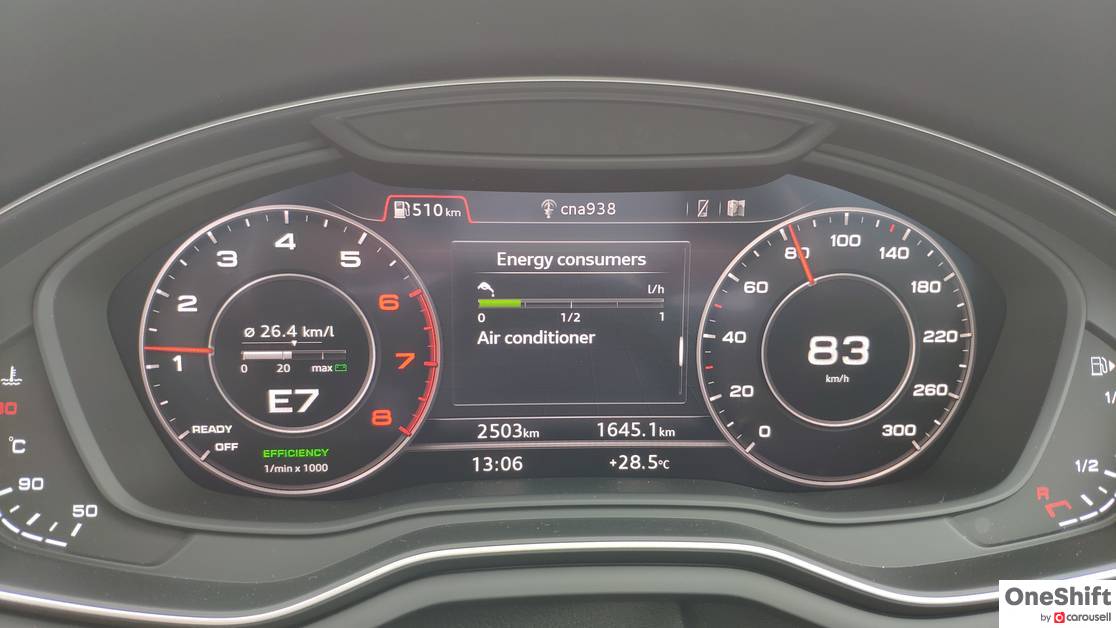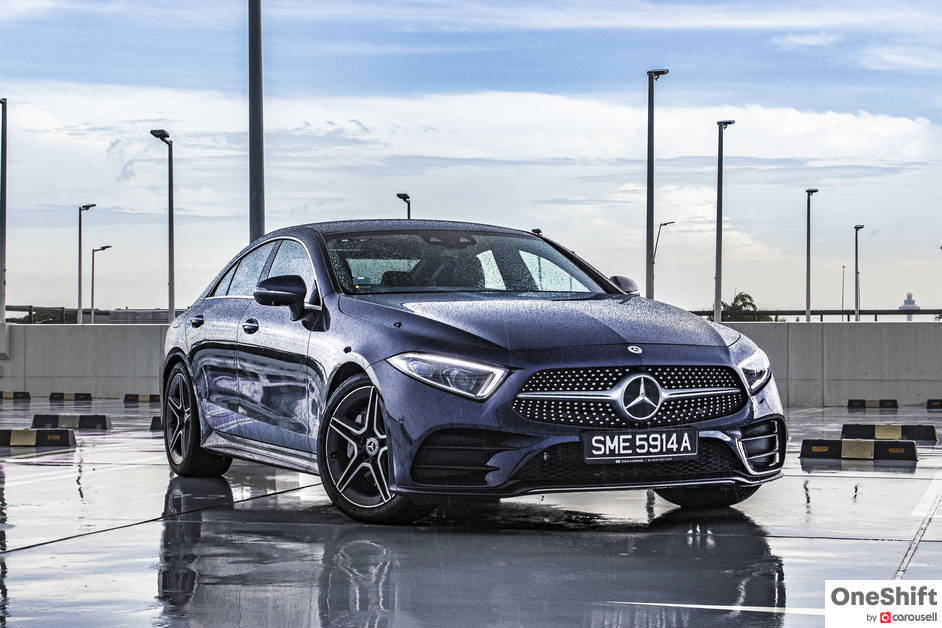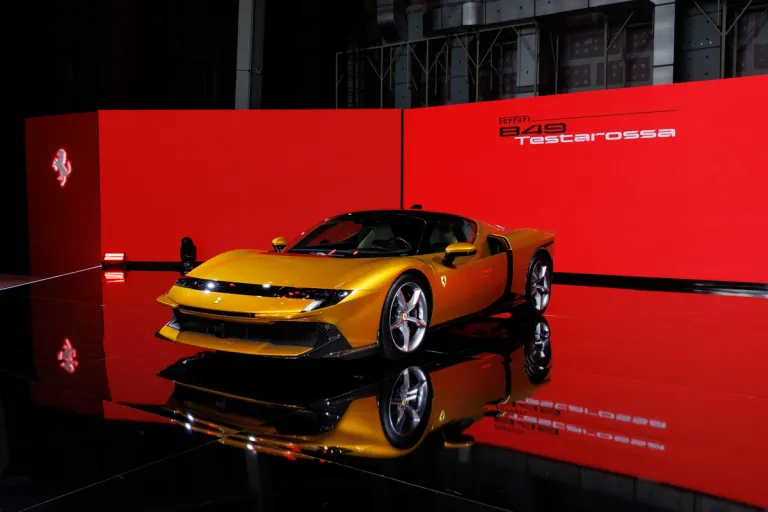OPINION - Can Singapore Afford To Go Electric?
By 2040, Singapore plans to phase out petrol and diesel vehicles. The intent is to clean up the air around us, and to reduce our overall carbon footprint. The notion that the Electric Car (EV) can promote clean air and a lower global carbon footprint might actually be flawed, but in Singapore’s context is it?


The notion that the Electric Vehicle (EV) can promote clean air and a lower global carbon footprint might actually be flawed, but in Singapore’s context is it?
I have always stood by the statement that “Your car is really as clean as what it really burns”. The development of the EV to me, is part of the result of automobile manufacturers having to beat the very same drums that the Green Lobbyist is beating. If you look at this from a wider perspective, green groups are influential. I am not saying that they are entirely a bad thing, and I do have my passion for cars with moving bits under the bonnet. However, we all need a little push at times to get things done. Pressure from these groups on their respective governments, helps with the rolling out of greener initiatives. Most of these, I dare say, have a positive effect on saving the planet, in one way or another.

Good intent, once it passes through official channels, and becomes a “recommended way” or “the only way” to do something, and can at times do more damage than good. A very good example of this is when Mike Rowe of ‘Dirty Jobs’ fame, tried his hand at castrating sheep. He learnt that there was a ‘PETA’ (People for the Ethical Treatment of Animals) way which came highly recommended by well… PETA, and then there was the time tested method the farmers used, which caused their animals far lesser distress.
Perhaps the ones banging the drums have but lesser lenses to see out from, and as the saying goes “a little knowledge is a dangerous thing”.
So back to the current automotive buzzword, the EV.

By 2040, Singapore aims to phase out the sale of cars powered by internal combustion engines. In 2019, there have already been 1,120 registered EVs in the city state alone, twice the amount compared to a year prior. Petrol-electric hybrid cars have also seen an increase in popularity, with 35,718 registered in the same year, about an 8,500 increase over the previous year’s registration numbers. It is not rocket science that many of these are fleet buys, intended for supply to ride hailing businesses. However there is also an increase in takeup with private buyers here. Plug-In hybrid cars, like the BMW 530e, which are privately owned, have also seen a small spike in sales.

Well yes they are… That is provided the location you are at, takes its supply of power from a clean and renewable source. Solar, wind, hydro-electric (if you were to ignore the environmental degradation contributed by building these things in the first place, which you should not)... you get the drift.
EVs, operating within a densely populated area, compared to cars with petrol or diesel engines, would greatly improve the air quality, and a good infrastructured city would be an ideal setting for these vehicles. On this note, Singapore is a place where implementation of EV supporting infrastructure is relatively easy, given its size. Countries like Norway on the other hand has it easier in-terms of implementation, since most home-based parking lots already have electrical points built in, to power engine block heaters during the cold season, and it would take much less to install a charging station, since there is already power to tap on.
Incentives introduced by governments of countries, can contribute to the idea of owning an EV quite appealing. In many cases, these incentives rolled out do not only end at the stage of purchasing the vehicle, they are also provided in the form of the allowed use of bus lanes during peak hours (controversially legal in the UK and Norway), reduced or no congestion charges, lower taxation, cheaper parking in some areas, and dedicated lots for EVs (since they do need to juice up).

Christopher Wehner, Managing Director - BMW Group Asia at the 2020 Singapore Motorshow
BMW itself, offers a range of Plug-in Hybrid (PHEV) vehicles. According to Christopher Wehner, Managing Director - BMW Group Asia, the PHEV, is a good first step to electrification, especially for countries, like Singapore which do not have the necessary infrastructure rolled out just yet.
While PHEVs do have their charging ports and do offer pure electric drive capabilities but for a limited range, they still rely on their engines, to deliver a good proportion of their drive. Such cars are ideal here, that is if you do have access to your own charging facility.
Those who do not have the luxury of their very own charging point, can still have the long-proven option of regular petrol-electric hybrids, or even mild-hybrid cars like the Mazda 3, which is quite attainable... practical stopgaps along the way to full electrification.

Back to talking about EVs, these tax and VES pricing exemptions are short or midterm. Once an EV becomes the norm, the playing field will be levelled.
With electrification, there is plenty of disruption within current supply chains. Building the motor which runs the car, is a far simpler process, as compared to building a combustion engine. There is already a shift in supplying for the industry.
A large focus on the EV, is on how much juice can batteries store. Range anxiety is a real thing among motorists who have driven an EV. I personally experienced it when test driving a BMW i3, which ran out of power. Fortunately for me, that unit was equipped with a range extender, which kicked into action to charge the cells.

However in countries where infrastructure for charging a car is scarce, an EV might simply not be a viable solution for you to get from one location to another. While Singapore might be easy to get around, travelling up North does need some clever planning. While charging infrastructure has already been rolled out, especially along the major highways, you would need to keep in mind that charging does take time. If you have lucked out in your Tesla, you can be looking at a full charge time of around 11 hours, and if you are connected to a 7kW AC charger… that my friends, is lots of waiting and plenty of coffee (and good luck to you if you only have access to a 3.7kW charger). Compare that to the current practice of topping your tank at the pump, which takes all of 10 minutes, and back onto the road you go; and fuel stations are everywhere!

Mining for Cobalt
Photo: BMW
Mining for raw materials for batteries is one which can cause irreversible environmental damage. Congo, which produces more than half of the world’s demand of cobalt, is also known to be guilty of human rights violations during the mining of the raw material. Companies like BMW Group, which requires cobalt and lithium as raw materials for its batteries, insist in transparency on the methods used in mining for the precious resource and how their workers are protected.

Allow me to repeat this. “Your car is really as clean as what it really burns”... And allow me to address the biggest elephant in the room. Most of Singapore’s power plants now run on Piped Natural Gas, or Liquified Natural Gas (LNG). I have to say that they are a vast improvement over older technologies which relied on coal. The average amount of CO2 emitted per kilowatt hour is 549 grams, versus a coal powered station which emits 915 grams. However, US-based research and advocacy group, Global Energy Monitor’s Executive Director, Ted Nace, who’s research group tracks fossil fuel development also has concerns about methane emissions from these power plants, which are difficult to monitor. The quantity of this potent greenhouse gas in our atmosphere is bound to rise, with the increase of the number of power stations being built. The shift to EVs will however undoubtedly see the need to increase energy production. In-essence, you are just moving the location of your tailpipe, and hence you would be just as guilty in creating similar emissions… Naughty naughty… you early adopters!

That said, Singapore is already making strides in harnessing solar energy. The city state is aiming to achieve a 2 gigawatt-peak (GWp) by the year 2030, which means by then, you can drive guilt-free.
Do not get me wrong. The LNG stations are still good, in context if you compare them to a coal-burner, therefore we have come a long way. The EV can be a good switch, only if the source is a clean and renewable one. And the earlier-mentioned solar grid will benefit a population of cars which are predominantly EVs, provided that they are given the priority of being powered by solar energy in the first place.

Lastly, I know this is an exceptionally weak argument… within this larger argument. Internal combustion engines have a “soul”, and any of us are emotional beings. An engaging car awakens something within us. How it handles, how it is styled and how it is built, does impact how we feel about a car. Moreover, having something mechanically complex… an engine, how it delivers its drive, and how it sounds. These are irreplaceable. It is almost the very same reason why many of us who like an emotional car will at the same time, find CVT transmissions annoyingly unengaging. With that said, I would pick an emotional car anytime over something which seems to run like a washing machine.
Are we over thinking things? Well I believe we have to. Singapore is after-all densely populated, and not a large country. While the government has been harping on having our nation to go car-lite, promoting public transport and making car ownership less attractive (very much to my dismay); the recently highlighted effects of COVID-19 on the human body, and how contagious it is (especially since its spread can come from someone coughing, sneezing or simply talking… imagine if someone farts on a rush hour train, and you can smell it… close enough), are good enough a reason for me to underscore the importance of car ownership to many of us here; and I cannot stress enough the convenience they bring, and also the aforementioned issue of cleanliness.

While there are surface incentives of owning an EV in Singapore, the high point of entry, the current lack of publicly available infrastructure in the correct locations in this early stage of the game (most publicly available charging points are located in business districts, and not within HDB carparks - 1,600 which are available now, and are slated to increase to 28,000 in ten years), and that any savings that you make from your daily commutes (versus burning fossil fuel), would likely not be able to offset the added cost of purchasing an electric variant of the same automobile; when a conventional one is simply cheaper… unless you are clocking some serious mileage. I can also imagine those who own regular cars who are going to be unhappy at the increase of lots reserved for these EVs.

Automotive giants like BMW, have many stakeholders to answer to. They have to make sure that a car they produce will comply with all the emissions standards (if any), compatibility and safety requirements of every country they plan to sell their vehicle to. Being a leading manufacturer, they have also been forward in thinking, in how to create a sustainable life cycle loop for their batteries. Batteries which power BMW cars in this case, are given a second life as a stationary energy storage device, once they are not ideal for use in a vehicle. At the end of their life, the cells are stripped apart by a third party, so that their raw materials can be scavenged and reused.

As change is inevitable, I can almost feel a lump in my throat at the impending demise of their signature in-line 6 and lovely V8…
In conclusion, if we are going forward with electrification, we are largely on-track, this is provided that the use of clean energies are in the first place prioritised for the future population of EVs.
Before I end, I’d like to drop another argument here. Would an EuroVI-compliant diesel do the trick in saving our environment even for the mid-term?
While I feel that we are not ready for an EV for the time being, there are some cars you can consider, if you do want to reduce your carbon footprint. Or if it resonates better with you, cars that can reduce your fuel consumption.
The term ‘Budack Cycle’ might seem foreign to you, B-Cycle for short, and named after its developer. The Volkswagen Group has a tweaked 2.0 EA888 engine, which relies on a modified Miller Cycle, which essentially allows it to deliver efficiency similar to a 1.4 litre engine. No hybridisation here, just some very sound German engineering!
The Audi A4 is fitted with one of these. Drive is provided through a dual-clutch transmission, which features an innovative coasting function (essentially allowing the car to glide down the road in neutral). We took an A4 up North, and even clocked an average of 26.4km/l.

If you are one for a refined drive and a luxuriously built interior rivaling those found in luxury brands, the Mazda 3 is spot-on.

The current 3 is also their very first here to feature mild hybrid technology. Its 1.5 litre engine gets help from its new M-Hybrid drive system, which adds another 48.5Nm from just 100rpm. This is crucial especially if you operate a car in a heavy start-stop environment like ours, where a good share of fuel is consumed during starting off. The Mazda 3 sedan’s consumption is rated at 18.2km/l in combined cycle.
The advantage of a PHEV is that it is not entirely dependent on the grid for it to operate, since it does have an engine. While charging it does draw from the grid, the battery is not as large as a dedicated EV, and therefore does not require as much juice.

Performance is impressive. A 6.2 second 100km/h sprint, coupled with the 5’s handling characteristics, ensures an entertaining drive.

Four-doored coupes have quite recently gained popularity. The brand responsible for the very first one is Mercedes-Benz. The third generation CLS 350 benefits from a 48-volt starter/alternator. The CLS is able to glide down the road with the engine shut-off, significantly reducing fuel consumption.

Even with its coupe styling, the CLS is still a very practical car, which comfortably seats four, and has a practical boot.
The Koreans have come a long way in automotive development. The Ioniq Hybrid is one of the most popular fleet buys here. As one of the more affordable hybrid vehicles, the Ioniq offers equipment on its list, like ventilated front seats, which would normally be found on more upmarket brands, and it is highly practical too, with its liftback style boot.
#ElectricCars #EV #SG #Singapore #BMW #AUDI #Mazda #Hyundai #MercedesBenz #Autos BMW Singapore BMW Performance Motors Singapore Audi Singapore Mercedes-Benz Singapore Mazda Singapore - Eurokars Group Hyundai Singapore #Electric #Charging #PHEV #Hybrid #Battery #Power #Engine #Future #Energy #Solar #LNG

Credits: Words and Photos by Clifford Chow


Get the Best Price for your used car
from 500+ dealers in 24 hours

- Convenient and Hassle-Free
- Consumer Protection
Transparent Process
With No Obligation








